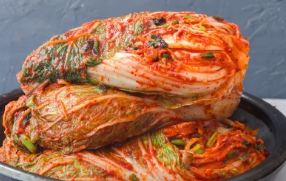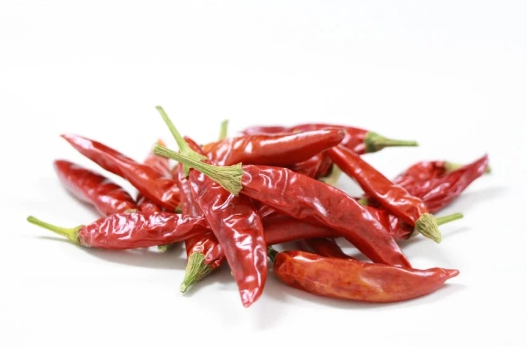김장 문화 (김치)
1. Kimjang Culture
Kimjang culture is a deeply rooted Korean tradition of making and sharing large quantities of kimchi in late autumn. This communal activity prepares families for winter and fosters a strong sense of community. More than just food preservation, it's a significant cultural event that emphasizes cooperation and is passed down through generations, recognized as a UNESCO Intangible Cultural Heritage.
김장 문화는 늦가을에 대량의 김치를 만들고 나누는 깊이 뿌리박힌 한국의 전통입니다. 이 공동체 활동은 가족들이 겨울을 대비하도록 준비시키고 강한 공동체 의식을 함양합니다. 단순히 음식 보존을 넘어, 협력을 강조하며 세대를 거쳐 전해지는 중요한 문화 행사이며, 유네스코 인류 무형문화유산으로도 등재되어 있습니다.
deeply rooted: 깊이 뿌리박힌
tradition: 전통
large quantities: 대량
communal activity: 공동체 활동
prepares for: ~을 준비시키다
fosters: 함양하다, 발전시키다
sense of community: 공동체 의식
food preservation: 음식 보존
significant: 중요한, 의미 있는
emphasizes: 강조하다
cooperation: 협력
passed down through generations: 세대를 거쳐 전해지다
recognized as: ~으로 인정받다
UNESCO Intangible Cultural Heritage: 유네스코 인류 무형문화유산

2. Why Kimchi Becomes Refreshingly Cool
Kimchi becomes refreshingly cool because the fermentation process creates natural acidity and carbonation. When stored at the right temperature, lactic acid bacteria actively break down sugars, producing a fresh, tangy flavor. This combination makes properly fermented kimchi taste crisp and cool, especially when eaten with warm rice.
김치가 시원해지는 이유는 발효 과정에서 자연스러운 산미와 탄산감이 생기기 때문입니다. 적절한 온도에서 보관하면 유산균이 당을 분해하며 상큼하고 톡 쏘는 맛을 만들어냅니다. 이 과정 덕분에 잘 익은 김치는 특히 따뜻한 밥과 먹을 때 아삭하고 시원한 맛을 느낄 수 있습니다.
fermentation: 발효
acidity: 산도, 산미
carbonation: 탄산 발생
tangy: 새콤한, 톡 쏘는
crisp: 아삭한
The distinctive "refreshing" taste of kimchi, often described as siwonhada, comes primarily from its unique fermentation process. Lactic acid bacteria, naturally abundant in the ingredients, break down carbohydrates and produce organic acids such as lactic acid. These acids not only give kimchi its characteristic sourness but also contribute to the crisp texture and the pleasant, palate-cleansing sensation that makes it so invigorating.
김치의 독특한 "시원한" 맛은 주로 독특한 발효 과정에서 비롯됩니다. 재료에 자연적으로 풍부한 유산균은 탄수화물을 분해하고 젖산과 같은 유기산을 생성합니다. 이 산들은 김치 특유의 신맛을 줄 뿐만 아니라 아삭한 식감과 즐거운 입맛을 개운하게 해주는 감각에 기여하여 김치를 매우 상쾌하게 만듭니다.
distinctive: 독특한, 특유의
refreshing taste: 시원한 맛
primarily: 주로
fermentation process: 발효 과정
lactic acid bacteria: 유산균
naturally abundant: 자연적으로 풍부한
break down: 분해하다
carbohydrates: 탄수화물
produce: 생산하다, 생성하다
organic acids: 유기산
lactic acid: 젖산
characteristic sourness: 특유의 신맛
contribute to: ~에 기여하다
crisp texture: 아삭한 식감
palate-cleansing sensation: 입맛을 개운하게 해주는 감각
invigorating: 상쾌하게 하는, 기운 나게 하는
3. Dishes Made with Kimchi
Kimchi's incredible versatility makes it a staple ingredient in countless Korean dishes beyond simply eating it as a side dish. Famous examples include hearty Kimchi Jjigae (kimchi stew), savory Kimchi Jeon (kimchi pancake), and comforting Kimchi Bokkeumbap (kimchi fried rice). It's also skillfully incorporated into Mandu (dumplings), adds a tangy kick to soups like Ramyeon, and even features as a topping on unexpected dishes like pizza or hot dogs, showcasing its adaptable flavor.
김치의 놀라운 다재다능함은 단순히 반찬으로 먹는 것을 넘어 수많은 한식 요리의 필수 재료로 만듭니다. 유명한 예로는 든든한 김치찌개, 고소한 김치전, 위로가 되는 김치볶음밥이 있습니다. 또한 만두에 능숙하게 넣어지고, 라면 같은 국물 요리에 새콤한 풍미를 더하며, 심지어 피자나 핫도그 같은 예상치 못한 요리의 토핑으로도 등장하여 김치의 뛰어난 적응력을 보여줍니다.
incredible versatility: 놀라운 다재다능함
staple ingredient: 필수 재료
countless: 셀 수 없이 많은
beyond simply: 단순히 ~을 넘어
side dish: 반찬
hearty: 든든한, 푸짐한
savory: 고소한, 맛있는
comforting: 위로가 되는
skillfully incorporated into: 능숙하게 ~에 포함되다
tangy kick: 새콤한 풍미
features as: ~으로 등장하다
unexpected dishes: 예상치 못한 요리
showcasing: ~을 보여주다, 드러내다
adaptable flavor: 적응력이 뛰어난 맛
4. Secrets to Making Delicious Kimchi Fried Rice
To make delicious kimchi fried rice, it is important to use well-fermented kimchi and cook it until the flavor deepens. Adding a bit of kimchi juice enhances the aroma, while butter or sesame oil boosts richness. Finishing with a fried egg on top creates a perfect balance of flavors and textures.
맛있는 김치볶음밥을 만들려면 잘 익은 김치를 사용하고 맛이 깊어질 때까지 볶는 것이 중요합니다. 김칫국물을 조금 넣으면 풍미가 높아지고, 버터나 참기름을 추가하면 고소함이 더해집니다. 마지막으로 계란프라이를 올리면 맛과 식감의 균형이 완성됩니다.
well-fermented: 잘 익은
aroma: 향
richness: 고소함, 풍부함
balance: 균형
texture: 식감
The secret to truly delicious kimchi fried rice lies in a few key techniques. First, use well-fermented, sour kimchi – its depth of flavor is crucial. Sauté the kimchi thoroughly with some oil until it caramelizes slightly; this enhances its sweetness and richness. Adding a spoonful of gochujang (Korean chili paste) for extra depth and a drizzle of sesame oil at the very end completes a perfect, aromatic dish.
진정으로 맛있는 김치볶음밥의 비법은 몇 가지 핵심 기술에 있습니다. 첫째, 잘 발효되어 신맛이 나는 김치를 사용해야 합니다. 김치의 깊은 맛이 매우 중요합니다. 김치를 기름에 약간 캐러멜화될 때까지 충분히 볶아서 단맛과 풍부함을 더하세요. 마지막에 고추장 한 숟가락으로 깊은 맛을 더하고 참기름을 살짝 뿌려주면 완벽하고 향긋한 요리가 완성됩니다.
truly delicious: 진정으로 맛있는
key techniques: 핵심 기술
well-fermented: 잘 발효된
sour kimchi: 신 김치
depth of flavor: 깊은 맛
crucial: 결정적인, 매우 중요한
sauté thoroughly: 충분히 볶다
caramelizes slightly: 약간 캐러멜화되다
enhances: 향상시키다, 강화하다
richness: 풍부함
a spoonful of: 한 숟가락의
gochujang: 고추장
extra depth: 추가적인 깊이
drizzle of: 소량 뿌림, 가는 물방울
sesame oil: 참기름
aromatic: 향긋한
5. Kimchi Made with Aged Pumpkin
While not as common as napa cabbage kimchi, some regional kimchi varieties ingeniously incorporate aged pumpkin, particularly in certain autumn kimchi recipes. The addition of aged pumpkin, which is naturally sweet and starchy, mellows the intense spiciness and sourness of the kimchi. It imparts a subtle sweetness, a unique creamy texture, and a beautiful golden hue, offering a milder and richer flavor profile.
배추김치만큼 흔하지는 않지만, 일부 지역 김치 종류에서는 특히 가을 김치 레시피에 늙은 호박을 독창적으로 사용합니다. 자연적으로 달고 전분질이 많은 늙은 호박을 추가하면 김치의 강한 매운맛과 신맛이 부드러워집니다. 이는 은은한 단맛, 독특한 크리미한 질감, 그리고 아름다운 황금빛 색상을 부여하여 더 순하고 풍부한 맛을 제공합니다.
as common as: ~만큼 흔한
regional kimchi varieties: 지역 김치 종류
ingeniously incorporate: 독창적으로 통합하다, 사용하다
aged pumpkin: 늙은 호박
particularly: 특히
naturally sweet: 자연적으로 단
starchy: 전분질의
mellows: 부드럽게 하다
intense spiciness: 강한 매운맛
imparts: 부여하다, 주다
subtle sweetness: 은은한 단맛
creamy texture: 크리미한 질감
golden hue: 황금빛 색상
milder: 더 순한
richer flavor profile: 더 풍부한 맛의 특징
6. Secrets of Kimjang Broth
The secret to a truly outstanding Kimjang lies in the broth used for seasoning, often called kimchi-gukmul. This flavorful base is typically made by simmering various ingredients like dried anchovies, kelp, radishes, and sometimes dried shiitake mushrooms for a rich umami depth. This carefully prepared broth not only provides moisture but also infuses the kimchi with complex, savory notes, ensuring a well-balanced and profound taste that develops beautifully over time.
진정으로 뛰어난 김장의 비법은 양념에 사용되는 육수, 종종 '김치 국물'이라고 불리는 것에 있습니다. 이 풍미 가득한 기본 육수는 보통 말린 멸치, 다시마, 무, 그리고 때로는 말린 표고버섯과 같은 다양한 재료를 끓여 풍부한 감칠맛의 깊이를 더하여 만듭니다. 이렇게 신중하게 준비된 육수는 수분을 제공할 뿐만 아니라 김치에 복합적이고 고소한 풍미를 불어넣어 시간이 지남에 따라 아름답게 발전하는 균형 잡히고 깊은 맛을 보장합니다.
outstanding: 뛰어난, 훌륭한
broth: 육수
seasoning: 양념
flavorful base: 풍미 가득한 기본
typically made by: 주로 ~으로 만들어지다
simmering: 끓이다, 약한 불에 끓이다
various ingredients: 다양한 재료
dried anchovies: 말린 멸치
kelp: 다시마
radishes: 무
dried shiitake mushrooms: 말린 표고버섯
umami depth: 감칠맛의 깊이
carefully prepared: 신중하게 준비된
provides moisture: 수분을 제공하다
infuses with: ~을 불어넣다
complex: 복합적인
savory notes: 고소한 풍미
well-balanced: 균형 잡힌
profound taste: 깊은 맛
develops beautifully over time: 시간이 지남에 따라 아름답게 발전하다
7. Secrets to Perfect Kimchi Seasoning
Perfect kimchi seasoning depends on achieving balance between saltiness, spiciness, sweetness, and umami. Fresh ingredients like garlic, ginger, and Korean pear help create a natural sweetness, while chili flakes provide heat and color. Using high-quality salt and allowing the seasoning to rest for a short time enhances the overall flavor, making the kimchi ferment evenly and develop a harmonious taste.
완벽한 김치 양념의 비결은 짠맛, 매운맛, 단맛, 감칠맛의 균형을 맞추는 데 있습니다. 마늘, 생강, 배 같은 신선한 재료는 자연스러운 단맛을 만들어 주고, 고춧가루는 매운맛과 색을 더합니다. 좋은 소금을 사용하고 양념을 잠시 숙성시키면 전체적인 풍미가 높아져 김치가 고르게 발효되고 조화로운 맛을 낼 수 있습니다.
achieve balance: 균형을 맞추다
natural sweetness: 자연스러운 단맛
high-quality: 고품질의
enhance: 향상시키다
harmonious: 조화로운

























